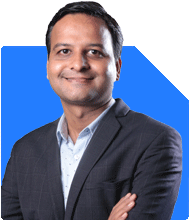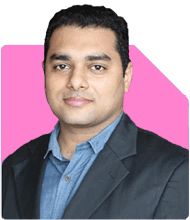Hlo sir, im vijaylaxmi 24 yrs old i want to do sip please suggest which fund is best to invest
Ans: Vijaylaxmi, it’s great that you want to start investing at the young age of 24.
Starting early gives you the benefit of time.
Your investment horizon is likely to be long, which is ideal for SIP investments.
Before selecting any fund, it's important to understand your financial goals.
You need to assess your risk tolerance, investment horizon, and financial objectives.
Since you are young, you can afford to take some risk, but that should align with your comfort level.
If you want to build wealth over the long term, equity mutual funds would suit your needs.
They have the potential to offer higher returns in the long run compared to other asset classes.
However, you should stay invested for at least 5-7 years to ride out market fluctuations.
Diversification Across Funds
It’s crucial to diversify your investments across different fund categories.
Diversification will reduce risk by spreading your money across different sectors and asset classes.
You can consider investing in large-cap funds, multi-cap funds, and mid-cap funds for diversification.
Each type of fund comes with its own level of risk and potential return.
Large-cap funds are more stable, while mid-cap and multi-cap funds can offer higher returns but come with higher volatility.
Why Not Index Funds?
You might hear people suggesting index funds, but let’s evaluate them.
Index funds simply track a market index like Nifty 50 or Sensex.
They don’t have active fund management, which means there’s no expert to make decisions during market ups and downs.
Although they have lower costs, their returns may not always outperform actively managed funds.
With actively managed funds, a professional fund manager selects stocks, making adjustments to take advantage of market opportunities.
The Benefits of SIP in Actively Managed Funds
SIP or Systematic Investment Plan is an excellent way to invest in mutual funds.
It helps you invest a fixed amount regularly, regardless of market conditions.
This instills financial discipline and reduces the impact of market volatility through rupee cost averaging.
You won’t need to worry about timing the market; SIP takes care of that for you.
Actively managed funds have the potential to outperform the market, especially when you stay invested over the long term.
When you invest through SIP in an actively managed fund, you get the expertise of a fund manager making strategic decisions to maximize returns.
Regular Funds Over Direct Funds
Now, let’s talk about the mode of investment.
Direct funds may seem attractive because they have lower expense ratios, but investing through regular funds offers benefits.
Regular funds give you access to the guidance of a Certified Financial Planner (CFP) or Mutual Fund Distributor (MFD).
Their advice can help you make informed decisions about your portfolio, especially if market conditions change.
A regular plan allows you to get ongoing support for your investment journey.
Investing through a Certified Financial Planner can help you align your portfolio with your financial goals.
They bring a deeper understanding of markets and can help optimize your asset allocation over time.
Flexibility in Fund Choices
While selecting funds, ensure that you pick flexible options.
Some funds are rigid and only invest in a certain category of stocks, which can limit their performance during different market cycles.
Flexible funds, like multi-cap funds, allow the fund manager to shift between large-cap, mid-cap, and small-cap stocks based on market conditions.
This flexibility can increase the fund’s chances of delivering consistent returns over time.
Equity Fund for Long-Term Goals
If your goal is long-term wealth creation, equity mutual funds are your best bet.
They generally outperform debt funds, FDs, and other conservative instruments over time.
Equity funds can offer better inflation-adjusted returns.
These funds invest in the stock market, which is why their potential for growth is higher.
However, they come with short-term volatility.
So, it’s important to have patience and a long-term perspective when investing in equity funds.
Growth or Dividend Option?
When investing in mutual funds, you will have to choose between the growth and dividend options.
Since you are young and likely looking to accumulate wealth, the growth option is more suited for you.
The growth option allows your investment to compound over time, as any profits earned by the fund are reinvested into the fund.
The dividend option provides periodic payouts, which is more suitable for investors seeking regular income.
In your case, you may not need regular income right now, so the growth option will help you build a larger corpus in the long run.
Taxation on Mutual Funds
When investing in mutual funds, it’s important to understand the tax implications.
For equity mutual funds, long-term capital gains (LTCG) are taxed at 12.5% after Rs 1.25 lakh.
Short-term capital gains (STCG) are taxed at 20%.
This means if you sell your equity mutual fund units before three years, the gains will be taxed as STCG.
If you hold the fund for longer than three years, any gains above Rs 1.25 lakh will be taxed as LTCG.
Since your investment horizon is long-term, this will work in your favor as you can take advantage of the LTCG benefit.
Systematic Withdrawal Plan (SWP) for Future Income
In the future, when you achieve your financial goals, you can convert your SIP investments into a Systematic Withdrawal Plan (SWP).
An SWP allows you to withdraw a fixed amount of money from your investment at regular intervals.
This is an effective way to create a steady stream of income from your mutual fund investment.
It can be particularly useful for retirement planning.
Since you are young, you have plenty of time to grow your investments before you need to rely on SWP.
Final Insights
At the age of 24, starting an SIP is a brilliant move.
Your time horizon allows you to take on equity market risks, which can result in higher long-term returns.
Diversify your investments across different fund categories to balance risk and return.
Actively managed funds offer better prospects than index funds due to the expertise of fund managers.
Choosing the growth option will help you accumulate wealth faster, as your profits will be reinvested.
Remember to stay invested for at least 5-7 years to maximize your returns.
As you move forward, work with a Certified Financial Planner to review your portfolio and make adjustments when necessary.
Best Regards,
K. Ramalingam, MBA, CFP,
Chief Financial Planner,
www.holisticinvestment.in
https://www.youtube.com/@HolisticInvestment




























